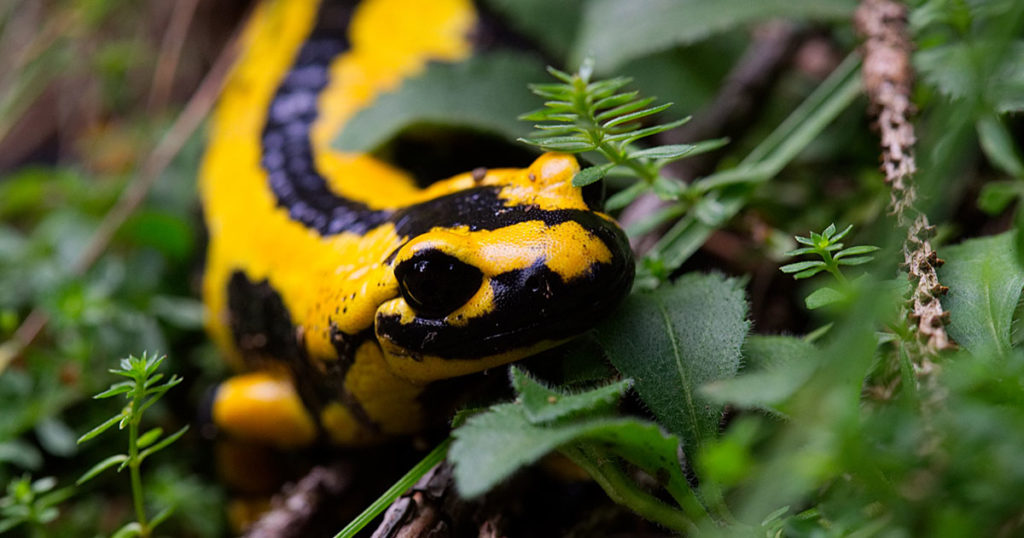
Before the dirt road between the highway and the coast near my house was paved 10 years ago, I would often see salamandras out after a rain. Lizard-like in general size and shape, they are quite different from lizards when you stop to stare at one. Yellow and black instead of gray-green, smooth and slick compared to dry and scaly, blunt and rounded instead of pointed, slow instead of quick, plump not skinny, and lovers of damp instead of sun worshippers—how could I compare the two? Salamanders are amphibians, lizards reptiles. And, since the road paving, salamanders, unlike the lizards running rampant on stone walls, wood piles, and flowerpots, are not much in evidence hereabouts. How I’d like to see one again.
Salamanders, like a number of other amphibians, are endangered in Spain. Cars and asphalt roads do them no favors, nor the increasingly contaminated environment. Curiously, however, they survive in the center of Asturias’s capital city, Oviedo, where they have lived for many hundreds of years, enclosed there first by the 8th-century stone walls around the original Basilica de San Salvador and other ecclesiastic buildings, and then later by more walls enlarging the enclosed area, creating another barrier that cut the salamanders off from other populations of their own kind. Only remnants of the walls remain today, but the paved roads and highways that came along later would have made new barriers for the creatures. And if enduring despite all this weren’t feat enough, they would have to manage without the pools, ponds, or rivers where the females deposit eggs that take six months to mature.
The biologist who in 2014 found salamanders sequestered in the small, protected walled gardens of the centuries-old cathedral is himself from Oviedo. His search was sparked by the carvings on the wooden choral seats in the cathedral and also in the stone embellishments depicting salamanders. Were the creatures that had inspired these centuries-old testaments to their presence still thriving? Were they even surviving?
After searching in the dark hours of warm, wet nights, and finding them, the biologist explains in a documentary that the salamanders of Oviedo have evolved so that the fertilized eggs mature within the body of the mother, not in water. As for how the creatures could thrive in the midst of a modern city, he suggests that those small private gardens protect the salamanders from their predators. Better than their natural habitat is a safe one. Just as for a lizard.
Across a stone wall a lizard hurries to hide. It’s gone in an instant, with an eye-catching flick of a tail. Among the stones of another wall a salamander slowly, discreetly withdraws. Unless instead of a salamander it was a yellowy leaf smudged with soot, given life through wishful thinking.

